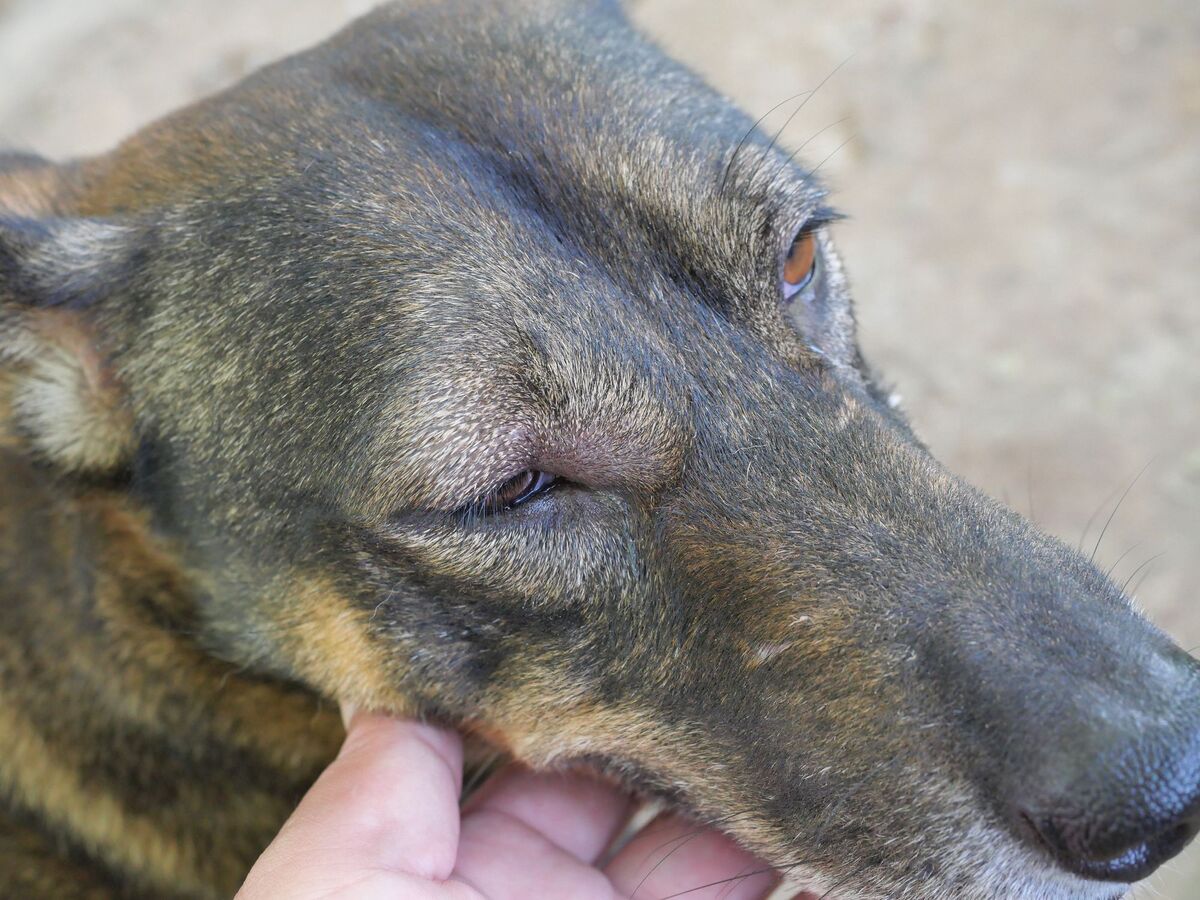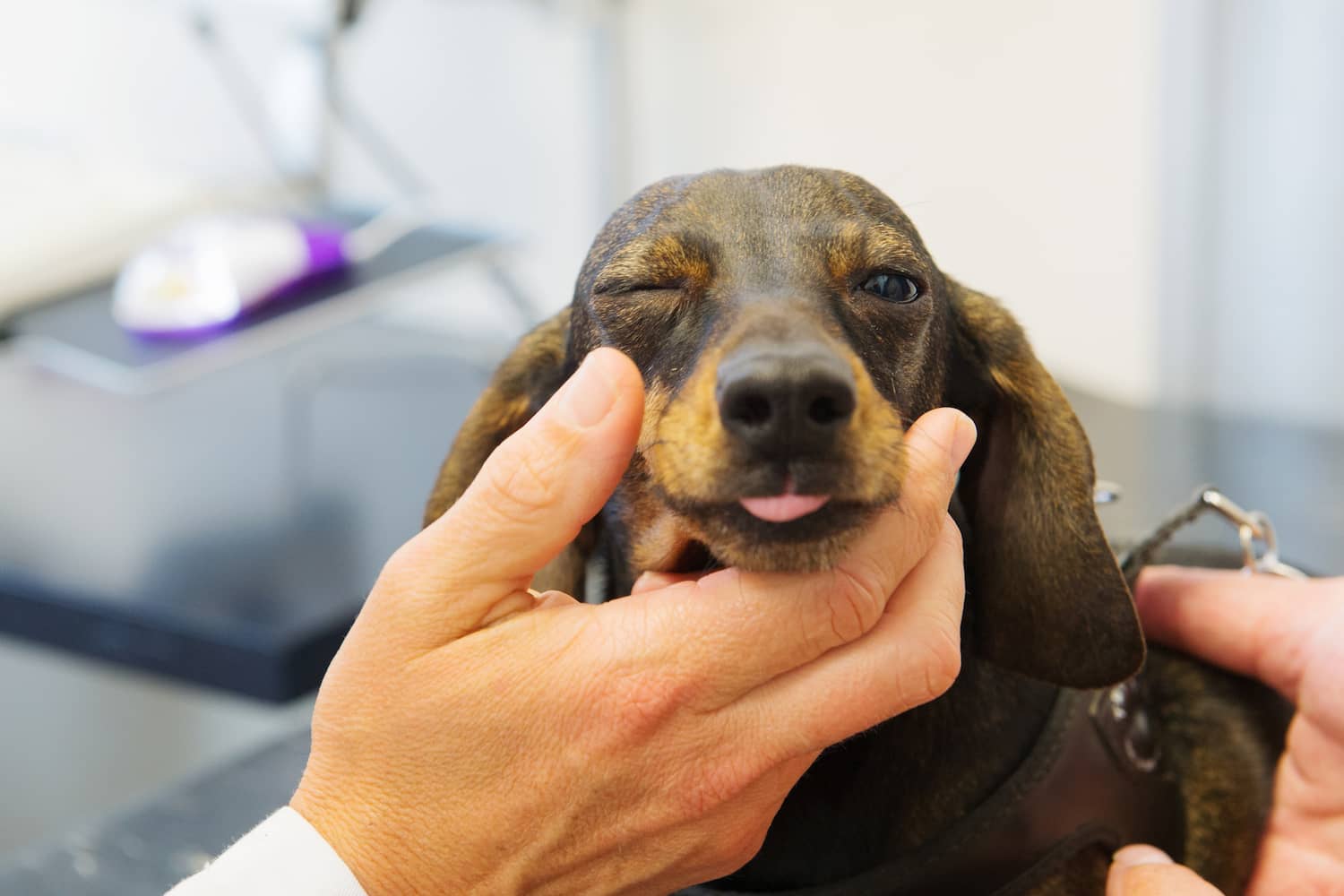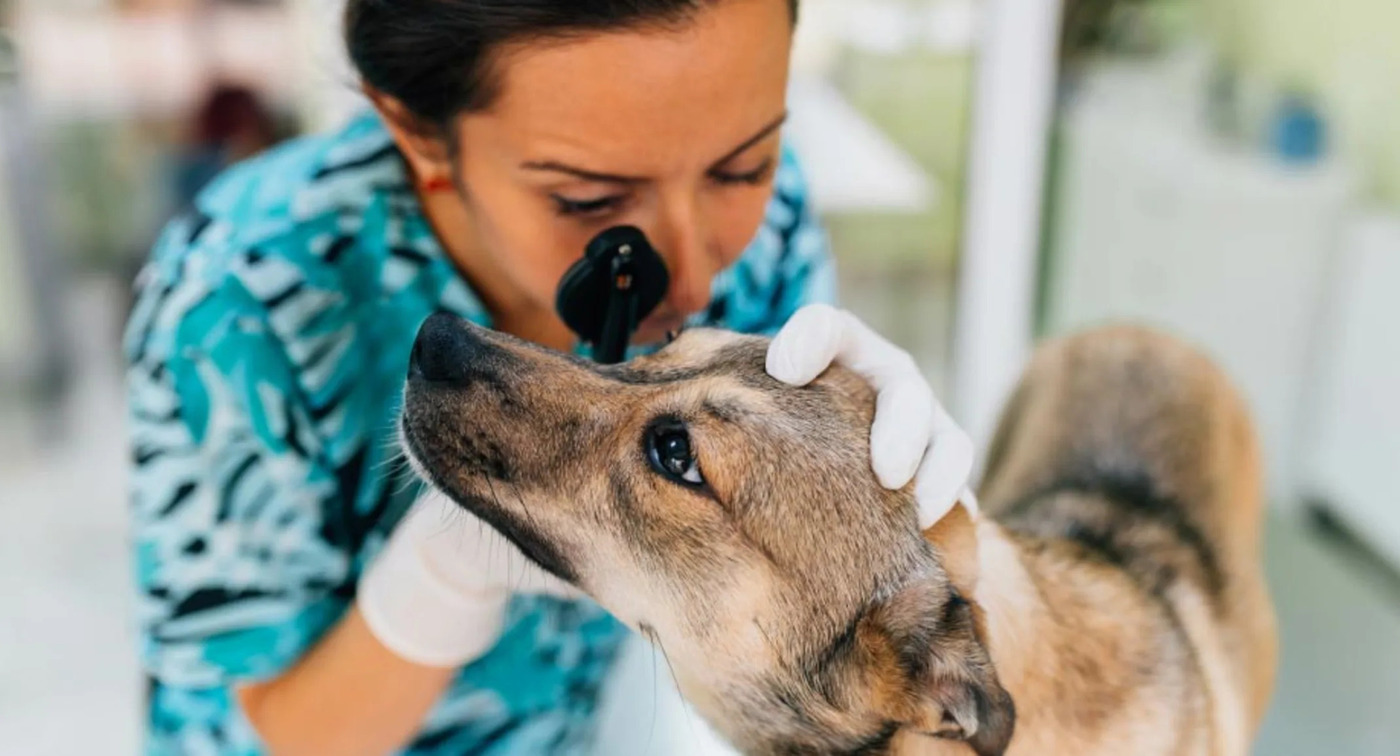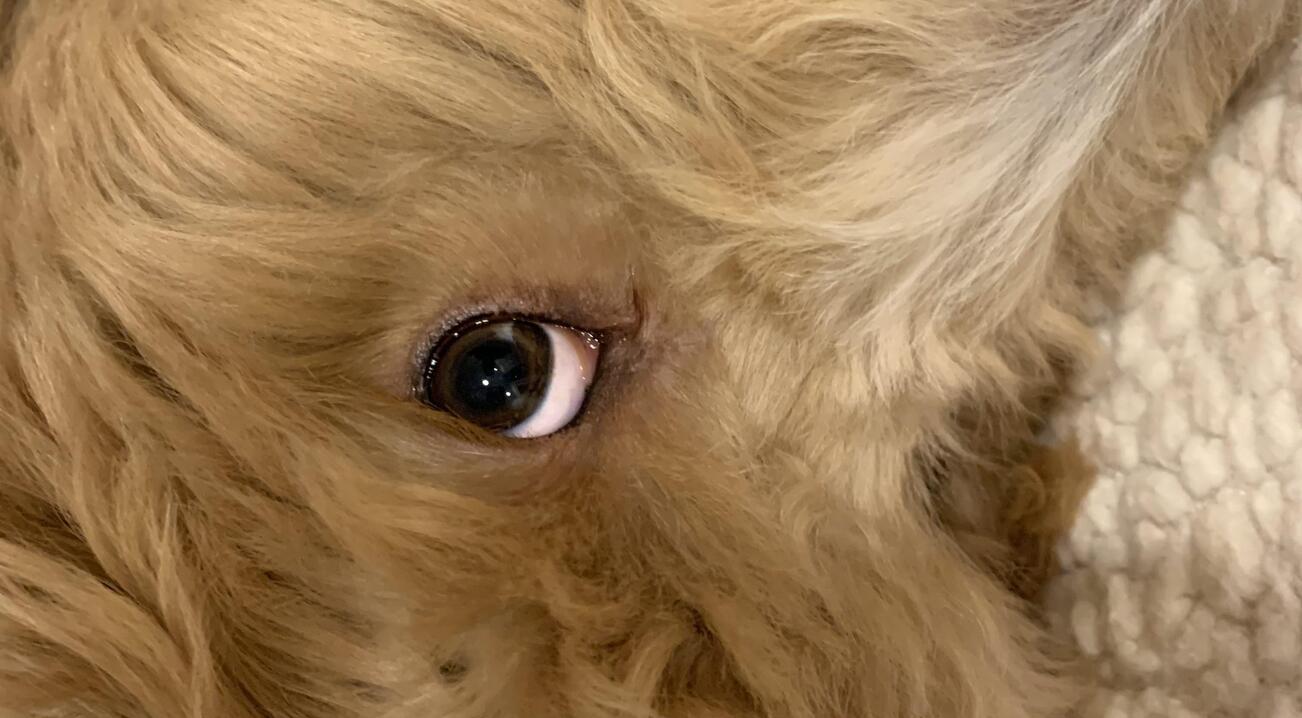Home>Health & Wellness>Common Health Issues>Why Does One Of My Dogs Have More Fleas?


Common Health Issues
Why Does One Of My Dogs Have More Fleas?
Published: February 14, 2024
Learn about common health issues in dogs and why one of your dogs may have more fleas. Find out how to address this concern and keep your pets healthy.
(Many of the links in this article redirect to a specific reviewed product. Your purchase of these products through affiliate links helps to generate commission for Pawsomeoldies.com, at no extra cost. Learn more)
Table of Contents
Introduction
Fleas are a common nuisance for pet owners, often causing distress and discomfort for our beloved furry friends. If you have multiple dogs, you may have noticed that one of them seems to attract more fleas than the others. This can be puzzling and concerning, but understanding the reasons behind this discrepancy is crucial in effectively addressing the issue.
Flea infestations can be frustrating to deal with, and it's essential to recognize that various factors contribute to the prevalence of fleas on individual dogs. By delving into the underlying causes, we can gain valuable insights into why one of your dogs may be more susceptible to fleas than the others. Understanding these factors is the first step in effectively managing and preventing flea infestations in a multi-dog household.
In the following sections, we will explore the intricacies of flea infestations, the factors that influence flea susceptibility in dogs, and practical strategies for managing fleas in a multi-dog environment. By shedding light on these aspects, we aim to equip you with the knowledge and tools to ensure the well-being of all your canine companions and create a flea-free living environment for both your pets and your family.
Read more: Why Does My Dog Have One Dilated Eye?
Understanding Fleas
Fleas are tiny, wingless parasites that thrive by feeding on the blood of their hosts, primarily dogs and cats. These pesky critters belong to the order Siphonaptera and are equipped with specialized mouthparts that allow them to pierce the skin and suck blood. Despite their minuscule size, fleas are incredibly agile and can quickly move through the dense fur of animals, making them challenging to detect and eliminate.
The life cycle of a flea consists of four stages: egg, larva, pupa, and adult. Understanding this life cycle is crucial in comprehending the challenges posed by flea infestations. Fleas reproduce rapidly, with a single adult female flea capable of laying hundreds of eggs within a short period. These eggs then develop into larvae, which thrive in dark, humid environments such as carpets, bedding, and upholstery. After undergoing metamorphosis, the larvae transform into pupae before emerging as adult fleas ready to seek out a host.
Fleas are not merely a source of irritation for pets; they can also transmit diseases and cause allergic reactions in both animals and humans. The saliva of fleas contains allergenic proteins that can trigger dermatitis in pets and lead to intense itching, hair loss, and skin infections. Moreover, fleas can transmit tapeworms and other pathogens, posing a significant health risk to infested animals.
In addition to the physical discomfort they inflict, fleas can also have a detrimental impact on the overall well-being of pets. Anemia, a condition characterized by a low red blood cell count, can occur in severe flea infestations, particularly in young, elderly, or debilitated animals. The constant blood loss resulting from flea feeding can lead to weakness, lethargy, and pale mucous membranes in affected pets.
Understanding the behavior and biology of fleas is crucial in devising effective strategies for prevention and control. By gaining insight into the factors that contribute to flea infestations and their impact on pets, we can take proactive measures to safeguard our furry companions from these persistent parasites.
Factors Affecting Flea Infestation
Several factors contribute to the prevalence and severity of flea infestations in dogs. Understanding these factors is crucial in addressing and preventing flea problems effectively. Here are the key elements that influence flea infestations in dogs:
-
Environmental Conditions: Fleas thrive in warm, humid environments, making these conditions conducive to their proliferation. Areas with high humidity and moderate temperatures provide an ideal habitat for fleas to breed and develop. Therefore, regions with a mild climate or indoor environments with poor ventilation can create favorable conditions for flea infestations.
-
Pet's Lifestyle: The lifestyle and habits of a dog can significantly impact its susceptibility to fleas. Dogs that spend a considerable amount of time outdoors, especially in grassy or wooded areas, are more likely to come into contact with fleas. Additionally, interactions with other animals, such as stray dogs or wildlife, can increase the risk of flea infestations.
-
Pet Grooming and Hygiene: Regular grooming and hygiene practices play a vital role in preventing and managing flea infestations. Dogs with poor grooming habits, such as infrequent bathing and brushing, are more susceptible to fleas. Maintaining a clean and well-groomed coat can help reduce the likelihood of flea infestations.
-
Presence of Other Pets: In multi-pet households, the presence of other animals, particularly those with existing flea problems, can contribute to the spread of fleas. Fleas can easily transfer from one pet to another, leading to widespread infestations if not addressed promptly.
-
Underlying Health Conditions: The overall health and immune function of a dog can influence its susceptibility to fleas. Dogs with compromised immune systems or underlying health issues may be more prone to flea infestations. Additionally, flea bites can exacerbate existing skin conditions, leading to secondary infections and discomfort for the affected dog.
-
Preventive Measures: The implementation of preventive measures, such as regular use of flea control products, can significantly impact the prevalence of fleas. Consistent use of flea preventatives, such as topical treatments, oral medications, or flea collars, can help mitigate the risk of infestations and protect dogs from flea-related health issues.
By considering these factors, pet owners can gain valuable insights into the dynamics of flea infestations and take proactive steps to minimize the risk for their canine companions. Understanding the interplay of environmental, lifestyle, and health-related factors is essential in developing comprehensive flea management strategies that prioritize the well-being of dogs and create a harmonious living environment for both pets and their human families.
Differences in Dogs' Flea Susceptibility
The susceptibility of dogs to flea infestations can vary significantly from one pet to another, even within the same household. Several factors contribute to these differences, shedding light on why one dog may attract more fleas than its canine counterparts.
1. Coat Type and Length
The characteristics of a dog's coat play a pivotal role in its susceptibility to fleas. Dogs with dense, long coats provide an ideal environment for fleas to thrive, as the ample fur provides hiding spots and protection for these persistent parasites. Breeds with double coats, such as Siberian Huskies or Golden Retrievers, are particularly susceptible to flea infestations due to the insulating properties of their fur. In contrast, dogs with short, sparse coats may be less attractive to fleas, as their fur offers less concealment and protection.
Read more: Why Does My Dog Have Fleas After Treatment?
2. Skin Sensitivity and Allergies
The sensitivity of a dog's skin to flea bites can influence its susceptibility to infestations. Some dogs may exhibit heightened allergic reactions to flea saliva, leading to intense itching, skin irritation, and dermatitis. These allergic reactions can make certain dogs more appealing to fleas, as the parasites are drawn to the host's blood and may preferentially target individuals with allergic sensitivities. Additionally, dogs with compromised skin barriers due to allergies or pre-existing skin conditions may be more susceptible to flea-related health issues.
3. Immune System Function
The strength of a dog's immune system plays a crucial role in its ability to fend off flea infestations. Dogs with robust immune responses may be better equipped to tolerate flea bites and mount effective defenses against these parasites. Conversely, dogs with weakened immune systems, whether due to age, underlying health conditions, or stress, may be more susceptible to flea infestations. A compromised immune system can hinder the dog's ability to combat fleas effectively, leading to prolonged infestations and associated health complications.
4. Behavioral Patterns and Interactions
The behavior and interactions of dogs within their environment can impact their exposure to fleas. Dogs that frequently interact with other animals, such as during visits to parks or encounters with neighborhood pets, may have a higher risk of acquiring fleas. Additionally, dogs that engage in activities such as rolling in grass or exploring wooded areas may inadvertently pick up fleas from the environment, contributing to variances in flea susceptibility among dogs.
5. Overall Health and Wellness
The general health and wellness of a dog can influence its susceptibility to fleas. Dogs that receive optimal nutrition, regular veterinary care, and preventive parasite control are better positioned to resist flea infestations. Conversely, dogs with underlying health issues, nutritional deficiencies, or inadequate preventive care may be more vulnerable to fleas and the associated health risks.
Understanding the diverse factors that contribute to differences in dogs' flea susceptibility is essential in tailoring effective flea management strategies for individual pets. By recognizing the unique characteristics and needs of each dog, pet owners can implement targeted preventive measures and interventions to safeguard their furry companions from the perils of flea infestations.
Read more: Why Are Fleas More Attracted To Dogs
Managing Fleas in Multiple Dog Household
Managing fleas in a multiple dog household presents unique challenges that require a comprehensive and proactive approach. The presence of multiple pets increases the likelihood of flea infestations, as these resilient parasites can easily spread from one dog to another. To effectively address and prevent flea problems in a multi-dog environment, pet owners must implement integrated flea management strategies tailored to the specific needs of their canine companions.
1. Regular Grooming and Hygiene Practices
Maintaining a strict grooming and hygiene regimen for all dogs in the household is paramount in flea prevention. Regular bathing with flea-repelling shampoos, coupled with thorough brushing to remove fleas and their eggs, can significantly reduce the risk of infestations. Additionally, keeping bedding, carpets, and upholstery clean and vacuumed helps eliminate flea eggs and larvae from the environment, minimizing the chances of reinfestation.
2. Consistent Use of Flea Control Products
Employing veterinarian-recommended flea control products is essential in managing fleas in a multi-dog household. Topical treatments, oral medications, and flea collars designed to repel and kill fleas should be administered to each dog according to their specific needs. Consistent use of these products, following the prescribed dosages and application schedules, is crucial in maintaining a protective barrier against fleas for all pets.
3. Environmental Treatments
Treating the indoor and outdoor environments where the dogs spend time is integral to comprehensive flea management. Using pet-safe flea sprays or foggers in living spaces, yards, and outdoor resting areas helps eliminate fleas at various life stages, disrupting their reproductive cycle. Regularly washing and sanitizing pet bedding and toys further reduces the likelihood of flea infestations.
Read more: Why Does My Dog Nibble Me As If I Have Fleas
4. Preventing Cross-Infestations
Isolating any newly acquired or infested dogs from the rest of the household pets until they are treated and cleared of fleas is crucial in preventing cross-infestations. Separating dogs during flea treatments and closely monitoring their interactions can help contain the spread of fleas within the household.
5. Veterinary Guidance and Monitoring
Seeking guidance from a veterinarian experienced in flea control is invaluable for managing fleas in a multi-dog household. Veterinarians can recommend tailored flea control plans, conduct regular wellness checks to assess flea-related issues, and provide guidance on addressing any underlying health conditions that may impact flea susceptibility.
By implementing these proactive measures and customizing flea management strategies to suit the unique dynamics of a multi-dog household, pet owners can effectively mitigate the risk of flea infestations and ensure the well-being of all their canine companions. Consistency, diligence, and a thorough understanding of flea control principles are essential in creating a harmonious and flea-free living environment for both pets and their human families.
Conclusion
In conclusion, the prevalence of fleas in a multi-dog household can be influenced by a myriad of factors, ranging from environmental conditions and grooming practices to individual variations in dogs' susceptibility. Understanding these complexities is pivotal in effectively managing and preventing flea infestations, ensuring the well-being of all canine companions.
By delving into the intricate world of fleas, we have gained valuable insights into their behavior, life cycle, and the diverse factors that contribute to their proliferation. Fleas are not merely a source of irritation for pets; they can also pose significant health risks, ranging from allergic reactions and dermatitis to the transmission of diseases and the potential for anemia in severe infestations.
The differences in dogs' flea susceptibility, influenced by coat type, skin sensitivity, immune system function, behavioral patterns, and overall health, underscore the need for tailored flea management strategies. Recognizing the unique characteristics and needs of each dog is essential in implementing targeted preventive measures and interventions to safeguard them from the perils of flea infestations.
In a multi-dog household, proactive flea management is paramount. From regular grooming and hygiene practices to consistent use of flea control products and environmental treatments, pet owners must adopt an integrated approach to flea prevention. Additionally, seeking veterinary guidance and closely monitoring the dynamics of the household can further enhance the effectiveness of flea management efforts.
Ultimately, creating a harmonious and flea-free living environment for both pets and their human families requires diligence, consistency, and a deep understanding of flea control principles. By prioritizing the well-being of all canine companions and implementing comprehensive flea management strategies, pet owners can mitigate the risk of infestations and ensure that their beloved furry friends thrive in a safe and comfortable environment.
In the battle against fleas, knowledge is our most potent weapon. Armed with a deeper understanding of flea infestations and the factors that influence them, pet owners can embark on a proactive journey towards creating a flea-free haven for their cherished canine companions.












